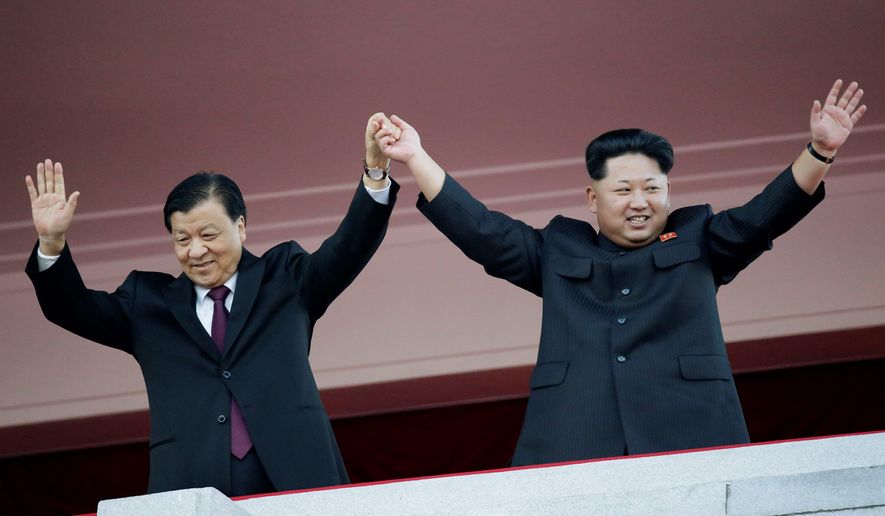Following North Korea’s most recent “shows of force” — including a parade that showed off a swath of new or upgraded weapons systems and a provocation along the DMZ that left two South Korean soldiers badly maimed — one cannot help but wonder how worried we should be. In the wake of a North Korea that may test both a long-range missile and a nuclear weapon in coming weeks or months, many tend to forget the entire reason for the ROK-U.S. alliance: to defend South Korea from attack and deter the North Korean threat. What many fail to realize is that this threat is largely composed of one of the world’s largest conventional militaries. Those who analyze North Korea on a daily basis continue to debate the strength of North Korea’s military, and if they were to ever actually attack the South, how effective they would be. If it happened, what kind of threat does North Korea truly present, and how does this affect the ROK-U.S. alliance? As President Park visits the United States, I believe it is important to consider this — and why the ROK-U.S. alliance is still so important.
There are three pillars for North Korea’s best-trained, best-fed and best-equipped forces. These elite forces with asymmetric capabilities are composed of long-range artillery units, short-range ballistic missile units (SRBM) and Special Operations Forces. When it comes to long-range artillery, North Korea produces its own versions of Soviet 240 mm multiple rocket launchers and 170 mm guns. The DPRK can fire these systems at ranges of 40,000 meters or more. At least 250 of them are now deployed to positions along the DMZ, where they can hit Seoul. They are capable of targeting the South Korean capital on a moment’s notice. According to military assessments, between 5 percent and 20 percent of the systems are equipped with chemical munitions.
These artillery systems, (extremely difficult to target except with a preemptive strike), are estimated by the ROK Ministry of National Defense and U.S. DOD to cause up to 200,000 casualties on the first day of any attack against the South. Thus, as I have said in the past, “North Korea’s artillery could shell Seoul, South Korea’s political, commercial and cultural center, back to the 1980s in a matter of hours.”
Short-range ballistic missiles are also a key threat against South Korea. The DPRK has made a concerted effort to raise its SRBM capabilities in terms of command and control, doctrine and, of course, numbers. When it comes to missiles that would be used against ROK-U.S. forces in a conflict, there are about 200 No Dong missiles and approximately 600 Scuds. The various Scuds in North Korea have ranges of 300 to 850 kilometers. North Korea can target every single inch of South Korea. The KN-02 is an indigenously produced version of the SS-21 that is road-mobile, highly accurate and uses solid fuel. This improved short-range missile that North Korea has now both tested and deployed, has a range of 120 to 160 kilometers, and can target American bases south of Seoul with deadly accuracy.
According to South Korea’s Ministry of National Defense, there are about 200,000 men in North Korea’s special operations forces (SOF). As I have stated in the past, “North Korean SOF are probably among the best- trained, best-fed and most motivated of all the forces in their military.” According to a recent defector, their SOF routinely conducts training that involves “carrying 50 pounds of sand for 10 km in one hour, hiking in extreme cold weather, martial arts methodologies that include fighting with three to 15 opponents and even using spoons and forks as weapons.” These elite troops also are well known for both marksmanship and knife-fighting skills. In wartime these troops would target (preplanned) key nodes in South Korea using aircraft, infiltrating south using tunnels under the DMZ or by using the many maritime infiltration vessels in North Korea’s arsenal.
In wartime, the well-planned, combined use of these forces would create panic in Seoul and other targeted areas in the initial hours and days of any attack. As the confusion ensued, these forces would attempt to create cracks in the combined ROK-U.S. defenses. These cracks would then make it possible for follow-on forces such as armor, mechanized units and infantry to advance and occupy key ground (including Seoul). In fact, based on captured war plans, we now know that this is Pyongyang’s plan. Since the late 1990s North Korea has deployed many of its key conventional units to bases on or near invasion corridors into South Korea. If one is to make an assessment on all of these activities, the evidence shows that the casualties during the first days of a North Korean attack would be in the hundreds of thousands — many (if not most) of them in Seoul, and the majority of them civilians.
North Korea continues to maintain and improve its conventional, asymmetric and conventional forces. As long as Pyongyang continues to maintain its military in a semistate of war, conduct provocations and develop capabilities that create instability on the Korean Peninsula, the ROK-U.S. alliance will be vital in order to defend and deter against one of the most rogue nations on earth.
• Bruce Bechtol is a professor of political science at Angelo State University. A retired Marine, he also is a former senior intelligence analyst at the Defense Intelligence Agency. His latest book is entitled “North Korea and Regional Security in the Kim Jong-un Era.”




Please read our comment policy before commenting.